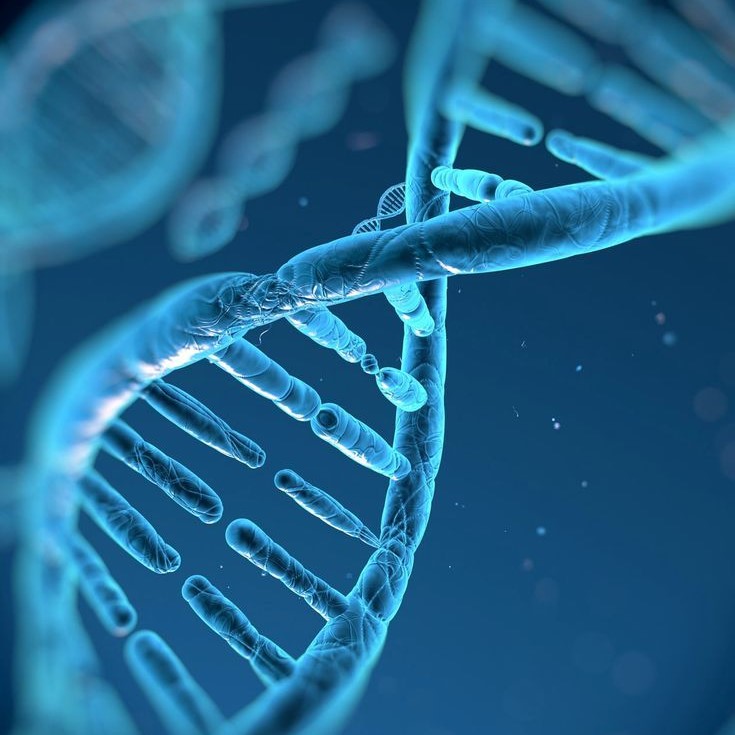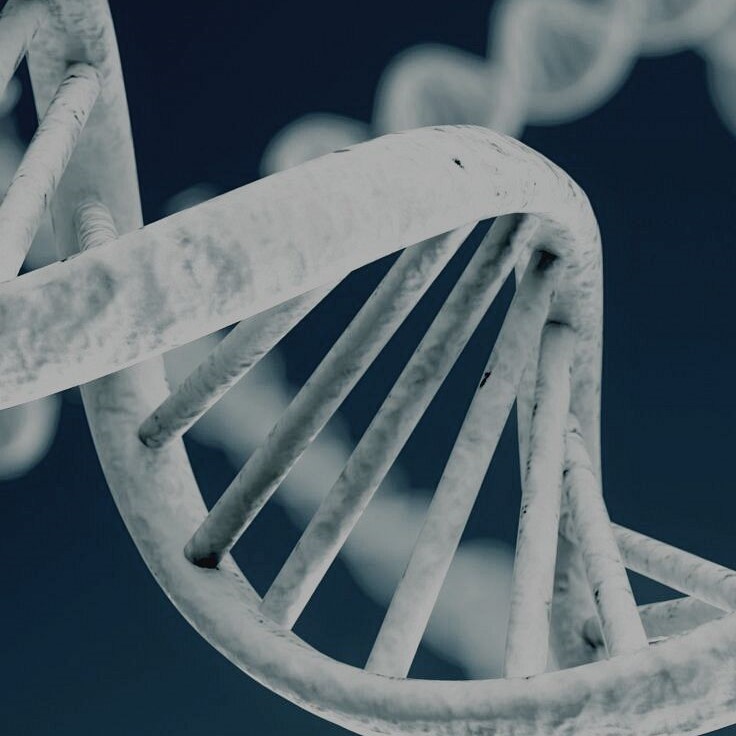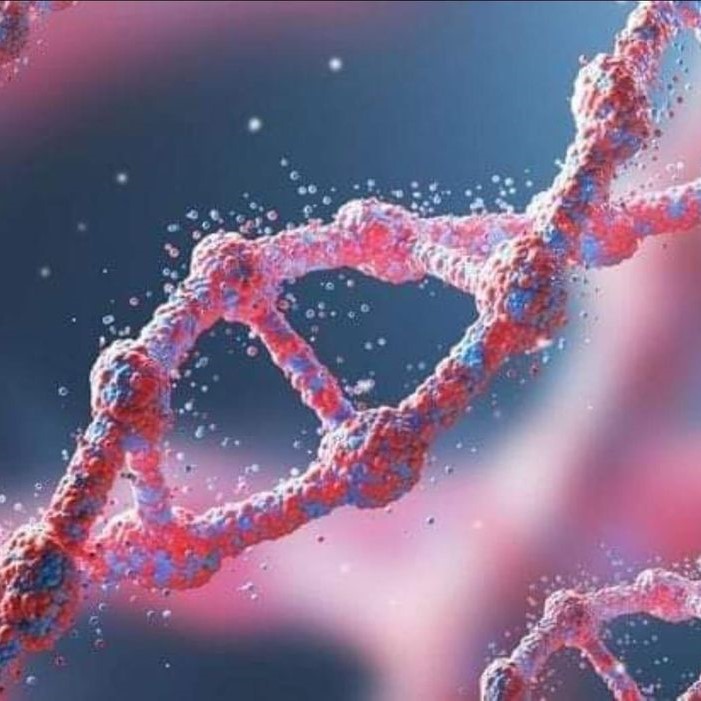What Is DNA and Why It Matters
DNA, short for deoxyribonucleic acid, is the hereditary material in humans and almost all other organisms. Each cell in an organism has the same DNA. Most DNA is located in the cell nucleus (where it is called nuclear DNA), but a small amount can also be found in the mitochondria (mitochondrial DNA). It is the blueprint that contains the instructions needed for an organism to grow, develop, survive and reproduce. DNA sequences tell cells which proteins to make and when to make them. This is crucial for proper cell function.
Understanding DNA is vital for numerous aspects of science and medicine. It plays a key role in genetics, biology, forensics, and biotechnology. Through DNA analysis, we can find out about our ancestry, identify genetic disorders, and catch criminals via genetic fingerprinting. In biotechnology, DNA manipulation has opened doors to new medical treatments and genetically modified organisms.
Being able to see DNA under microscope has led to remarkable discoveries in science. It’s not just a matter of observing the strands; it’s about understanding the way life is programmed at a molecular level. Visualizing DNA helps students and scientists comprehend how genetic information is structured and passed on.
When DNA is enhanced and observed under a microscope, its classic double helix structure, comprised of twisted ladder-shaped strands, is often recognizable. This structure was first identified by scientists James Watson and Francis Crick. Today, by placing dna under microscope, we can observe this wonder of nature more closely and appreciate its complexities.

The Basics of Microscopy
Before delving into the details of observing DNA under microscope, let’s cover the basics of microscopy. Microscopes vary in their design, operation, and the degrees of magnification they offer. Here are several fundamental points to understand about microscopy:
Magnification
- Definition of Magnification: Magnification is the process by which a microscope enlarges the image of the object being studied. It is a fundamental feature that allows users to see minute details that are not visible to the naked eye.
- Mechanism of Magnification: This process involves the use of lenses to create a larger image. The objective lens captures the image of the specimen and magnifies it, while the eyepiece lens can further enlarge this image for viewing.
- Types of Magnification: There are two primary types of magnification in microscopes: linear and angular. Linear magnification refers to the increase in the size of the object as viewed, while angular magnification considers the angle subtended by the object at the eyepiece.
- Understanding Magnification Levels: Microscopes can provide various levels of magnification, often ranging from 10x to 1000x or more, depending on the type of microscope. Different magnifications allow for different observations and analyses of specimens.
Resolution
- Definition of Resolution: Resolution refers to the microscope’s ability to distinguish between two closely spaced points as separate entities. It is a critical factor that influences the clarity and detail of the images captured.
- Importance of High Resolution: A higher resolution provides clearer and more detailed images, enabling scientists to observe finer structures such as cells, organelles, and even molecular formations. This capability is particularly important in research and diagnostic applications.
- Factors Affecting Resolution: Resolution can be affected by several factors, including the quality of the lenses, the wavelength of light used in imaging, and the numerical aperture of the objective lens. A microscope’s resolution is often expressed in nanometers, indicating the smallest distance between two points that can still be distinctly recognized.
- Practical Implications: In practical use, a microscope with high resolution allows for detailed examination of specimens, crucial for research in biology, materials science, and medicine. It aids in identifying cellular abnormalities or studying intricate structures.
Contrast
- Role of Contrast in Microscopy: Contrast is crucial in microscopy for distinguishing the details of the object being viewed. It enhances the visibility of specific features within the specimen, making it easier to identify structures and colors.
- Improving Contrast: Contrast can be adjusted in several ways. Increasing the intensity of the illumination can make certain features stand out. Additionally, using stained specimens or adding filters can enhance color differentiation and highlight areas of interest.
- Types of Contrast Techniques: Several techniques can enhance contrast in microscopy, including brightfield, darkfield, phase contrast, and differential interference contrast (DIC). Each method has its advantages depending on the type of specimen and desired outcome.
- Examples of Contrast Applications: For instance, staining techniques are commonly used in biological microscopy to visualize specific cell types or structures. By applying dyes that bind selectively to certain components, researchers can create stunning images that elucidate function and structure.
Light Source
- Types of Light Sources: Microscopes use various light sources to illuminate specimens. The type of light source can significantly impact the quality of images produced.
- Simple Light Sources: Basic microscopes may utilize simple mirrors that reflect ambient light onto the specimen. This setup is effective for observing opaque objects but may result in uneven lighting.
- Advanced Lighting Systems: Modern microscopes often feature sophisticated light sources, such as LED or laser systems. These sources provide consistent illumination and can be adjusted for intensity and color temperature, leading to better image quality and contrast.
-
Impact on Observations: The choice of a light source affects the visibility of certain specimen features, with some lighting techniques better suited for specific types of observations, such as fluorescence or phase contrast microscopy.
To observe DNA under a microscope, scientists typically use advanced microscopy techniques since DNA strands are incredibly small and intricate. Common types of microscopes used for this purpose include optical microscopes, which use light to form an image, and electron microscopes, which use a beam of electrons. Each type has its own set of preparation and viewing protocols, tailored to the unique requirements of DNA visualization.
Types of Microscopes Used for DNA Visualization
For dna under microscope observation, certain microscopes are essential. These enable scientists to view DNA’s fine details. Here, we highlight key instruments in this fascinating field.
Optical Microscopes:
These rely on light and lenses to magnify images. In DNA studies, optical microscopes offer moderate magnification. They allow observation of chromosomes during cell division. But they might not reveal individual DNA strands.
Fluorescence Microscopes:
This type enhances DNA viewing. They use specific dyes that glow when exposed to certain light. The glowing parts show the DNA’s location and structure. It’s handy for gene mapping and other genetic research.
Confocal Microscopes:
Confocal setups provide clearer images than typical fluorescence microscopes. They take many snapshots at different depths. This builds a 3D image of DNA structures.

Electron Microscopes:
These go beyond light microscopes in magnification and resolution. They use electrons instead of light. Transmission Electron Microscopes (TEMs) can show DNA’s double helix structure. Scanning Electron Microscopes (SEMs) provide DNA surface details.
Atomic Force Microscopes:
They’re unique. No light or electrons; they use a probe to feel the DNA surface. This gives a 3D image, showing the contours of DNA strands.
Super-Resolution Microscopes:
A recent advance in technology, these microscopes break traditional resolution limits. They allow scientists to see DNA arrangements in high definition.
Using these microscopes, we’re able to dive into the nano-world of genetics. They reveal DNA’s secrets and help push the boundaries of science. Each type serves a different purpose, providing a deeper understanding of DNA’s role in life.
Preparing DNA Samples for Microscopic Examination
Preparing DNA samples is a crucial step before placing DNA under microscope for visualization. The main goal is to ensure that the DNA is visible and distinguishable when magnified. Here’s a simplified look at how scientists prepare DNA samples:
Isolation: First, scientists isolate DNA from cells. This involves breaking open the cell membrane and separating DNA from other cellular components.
Purification: The extracted DNA needs purification. Scientists remove proteins, lipids, and other impurities that may interfere with the visualization process.
Concentration: Scientists then concentrate the DNA. This helps to ensure that enough DNA is present to be clearly observed under the microscope.
Mounting: The purified DNA is spread on a glass slide, called a mounting. The sample must attach firmly to the slide for proper examination.
Staining: Sometimes, scientists stain DNA with special dyes. These dyes help to make the DNA strands visible under the microscope.
By carefully carrying out each of these steps, scientists can prepare DNA samples that are ready for microscopic examination. This allows for the detailed study of DNA’s fascinating structure and function.
The Process of DNA Visualization Under a Microscope
The process of observing DNA under a microscope involves several precise steps. Simplifying these steps gives us an overview of how scientists visualize DNA in high detail.
Step 1: Sample Preparation:
Before DNA can be seen, the sample must be carefully prepared. This usually starts with DNA isolation and purification, as outlined previously. The sample is then mounted on a slide and may be stained to enhance visibility.
Step 2: Choosing the Right Microscope:
Based on what scientists need to see, they select the appropriate microscope. For overall structure, an optical microscope might suffice. To see the DNA up close, electron microscopes are preferred.
Step 3: Setting the Microscope:
Microscopes have various settings that need adjusting. These include focus, magnification, and contrast.
Step 4: Viewing and Imaging:
Once everything is set, the actual viewing begins. The microscope transmits the image of the DNA to the scientist.
Lastly, scientists analyze the images. They look for patterns, anomalies, or specific structures within the DNA. This analysis is critical for understanding the DNA’s characteristics and functions.
With this process, DNA under microscope becomes a window into the molecular foundations of life. By observing DNA, scientists unlock secrets of genetics and cell biology. They can find clues to diseases, evolution, and much more. Each step in the process brings them closer to these discoveries.
Common Patterns and Structures Observed
When placing DNA under microscope, certain recurring patterns and structures stand out. These observations not only verify our existing knowledge of DNA’s architecture but also provide insights into how genetic information is organized. Here are some of the common structures that scientists often encounter:
Double Helix: The iconic shape of the DNA molecule is its double helix structure. This looks like a twisted ladder when magnified. Its two strands wind around each other. It’s key for how DNA copies itself and carries genetic information.
Base Pairs: Within the helix, pairs of nucleotide bases hold the strands together. They form patterns as they pair up: adenine with thymine, and cytosine with guanine. Microscopes show these pairings, crucial for DNA’s function.
Chromosomes: During cell division, DNA wraps tightly into structures called chromosomes. Under the microscope, these appear as distinct bodies. The number and shape of chromosomes can help diagnose genetic conditions.
Genetic Markers: Scientists sometimes spot unique sequences in DNA. These markers can identify genes responsible for traits or disorders. They are like signposts in the maze of genetic data.
Replication Forks: A replication fork is a point where the DNA splits during copying. It resembles a ‘Y’ shape under a microscope. Observing these forks helps us understand DNA replication processes.
Scientists study these patterns to unravel the complex rules of genetics. Each structure plays a pivotal role in the storage and transfer of genetic information, and their accurate visualization through the microscope has been fundamental in advancing our understanding of molecular biology.
DNA Staining Techniques for Enhanced Visibility
To boost the visibility of dna under microscope, staining techniques are essential. These methods colorize DNA, making its structures stand out. Simple steps make this possible. Here is a breakdown of common staining methods:
Fluorochrome Stains: These bind to DNA and emit light when illuminated. They allow scientists to see DNA with a fluorescence microscope. Popular dyes include DAPI that glows blue and propidium iodide that shines red.
Silver Staining: This method uses silver. It binds well with DNA. Under light, silver makes DNA visible without a fluorescence microscope.
Ethidium Bromide Staining: A classic dye, ethidium bromide slots into DNA. It glows under ultraviolet light. However, it’s toxic and needs careful handling.
Giemsa Stain: Giemsa dye sticks to DNA regions with high adenine-thymine content. It’s often used for reviewing chromosomes during cell division.
Acridine Orange: This dye can show DNA and RNA differently. DNA glows green and RNA shines red under ultraviolet light.
These staining methods enhance dna under microscope analysis. They help see details that would otherwise be invisible. This lets researchers delve deeper into genetic mysteries. With stains, the intricate dance of DNA becomes a visual feast, laying bare the blueprints of life.
Advances in DNA Microscopy and Future Prospects
The field of DNA microscopy has seen remarkable advances, which have enhanced our understanding of genetics. Here’s a look at some cutting-edge developments and what the future might hold in store:
High-Throughput Sequencing:
Techniques like next-generation sequencing (NGS) have revolutionized how we study DNA. They allow for rapid reading of enormous volumes of DNA. This aids in identifying genetic variations and mutations.
Cryo-Electron Microscopy:
This method freezes DNA samples in their natural state. It captures high-resolution images without staining or other alterations. It’s gaining popularity for its detailed visualization.
Single-Molecule Microscopy:
This technique observes individual DNA molecules in real time. It helps in tracking how DNA interacts with proteins and other molecules.
AI and Machine Learning:
Artificial intelligence helps in analyzing complex microscopy data. It can spot patterns and anomalies faster than human researchers.
Nano-Imaging:
Advancements in nanotechnology have led to the development of nano-imaging tools. These microscopes provide an unprecedented look at DNA on the molecular level.
Looking ahead, we anticipate ongoing improvements in resolution and speed. Cost-effective techniques will likely make DNA microscopy more accessible. Research will focus on real-time DNA interaction monitoring and the study of live cells. We’re moving towards a future where viewing dna under microscope can unveil more of the secrets woven into the fabric of life.
Conclusion: Exploring DNA Under the Microscope
In conclusion, understanding how do DNA under microscope provides insight into one of life’s fundamental building blocks. The visualization techniques and careful preparation discussed in this article not only illustrate the beauty of DNA but also enhance our understanding of genetics and molecular biology.
By using the right tools and maintaining best practices for sample preparation, anyone can engage in this fascinating exploration. Whether you are a student, a researcher, or simply a science enthusiast, the world of DNA offers endless opportunities for discovery. Embrace the journey of exploration, and let the microscope reveal the intricate details of life’s most essential molecules. With this knowledge, you’re now equipped to appreciate the complexities of DNA like never before!







